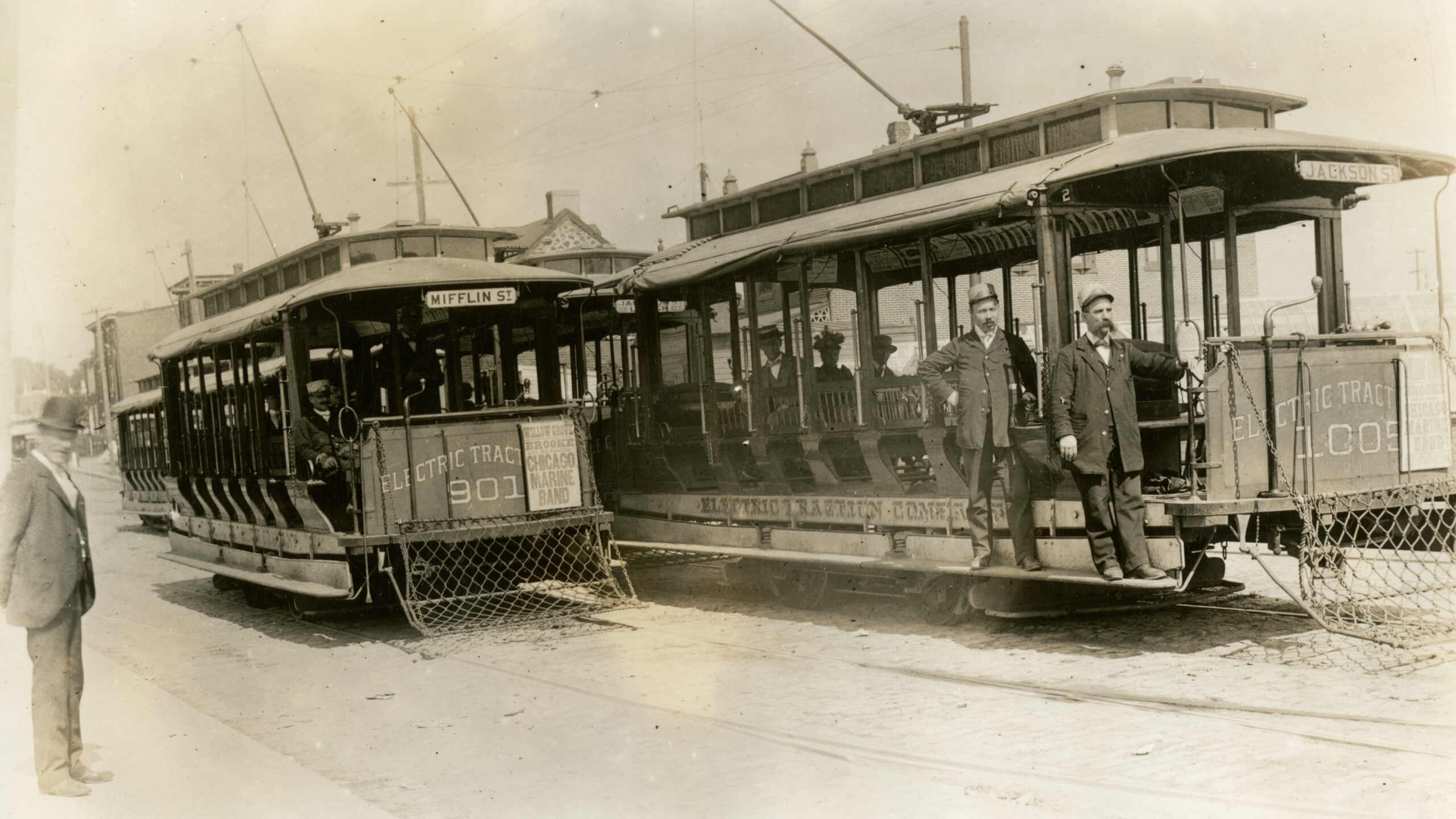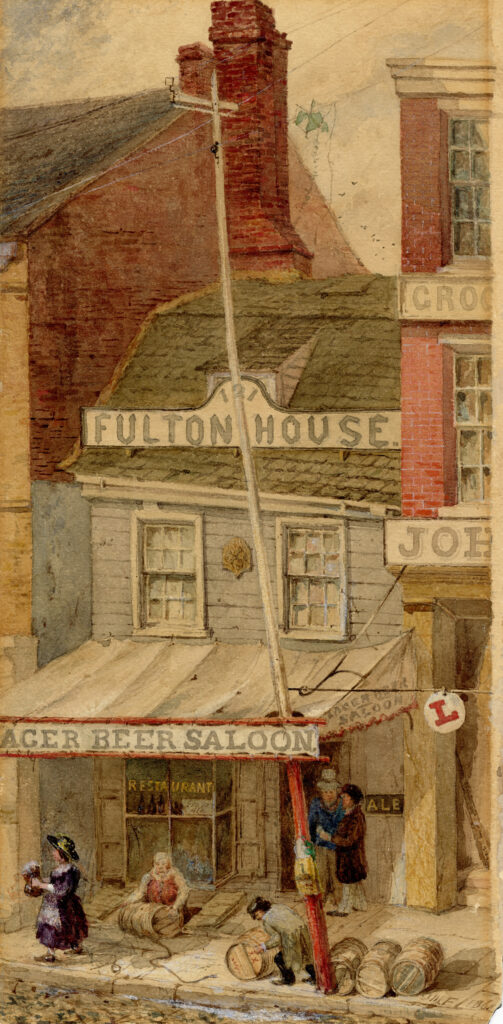
Electrical wires first appeared on Philly streets in 1845. A few pioneering wires were strung up on poles to facilitate the latest communication innovation: the telegraph. By the Civil War, tall telegraph poles were a common sight. At war’s end, telegraph poles sprouted like the masts of ships from street corners. They had grown to three-stories tall, carrying dozens of wires.
In the 1880s, more electrical wires were strung across Philly’s streets. They powered new Brush electric arc street lights on major streets. These lights gave off an intense, glaring light, and they emitted a loud hissing noise.
Department stores were early adopters of these lights indoors, dazzling shoppers with their night time brilliance. However, these harsh lights were more widely used to extend working hours in steel mills, textile mills, and mines (“The Brush Electric Light,” Scientific American, April 2, 1881).
Like so much in the Gilded Age, innovation looked very different depending on your perspective.
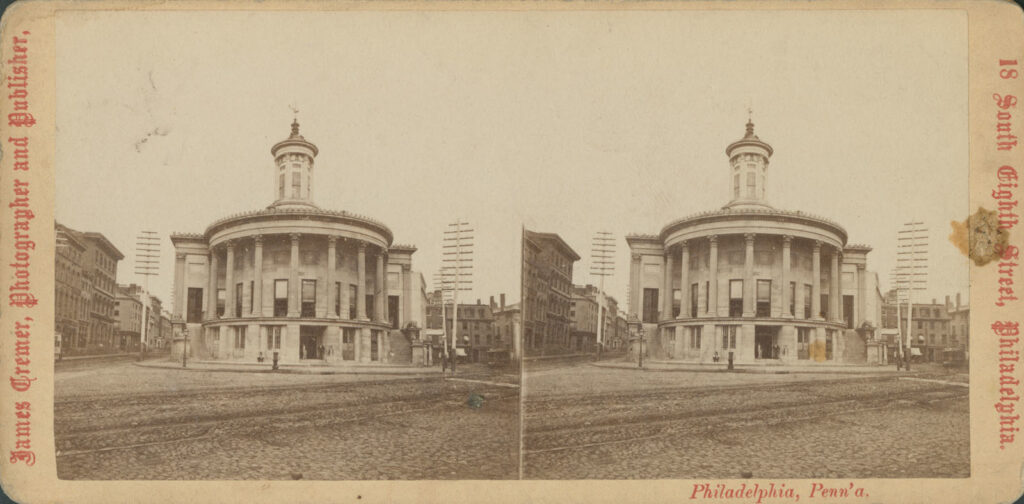
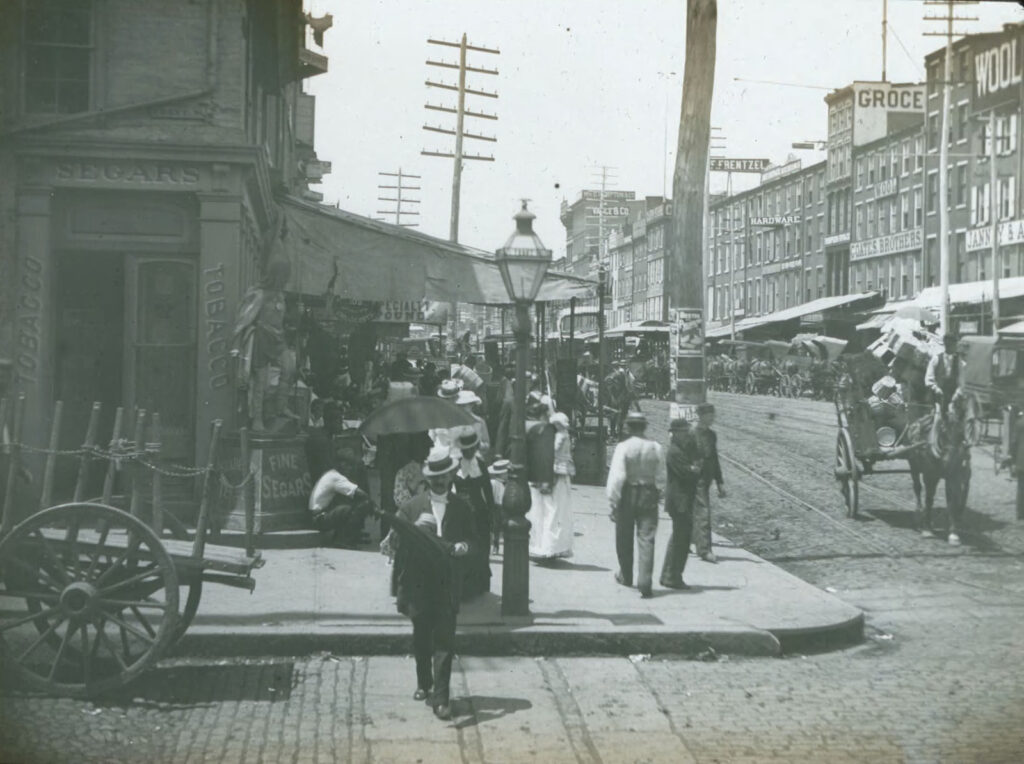
A Gallery of Gilded Age Streets
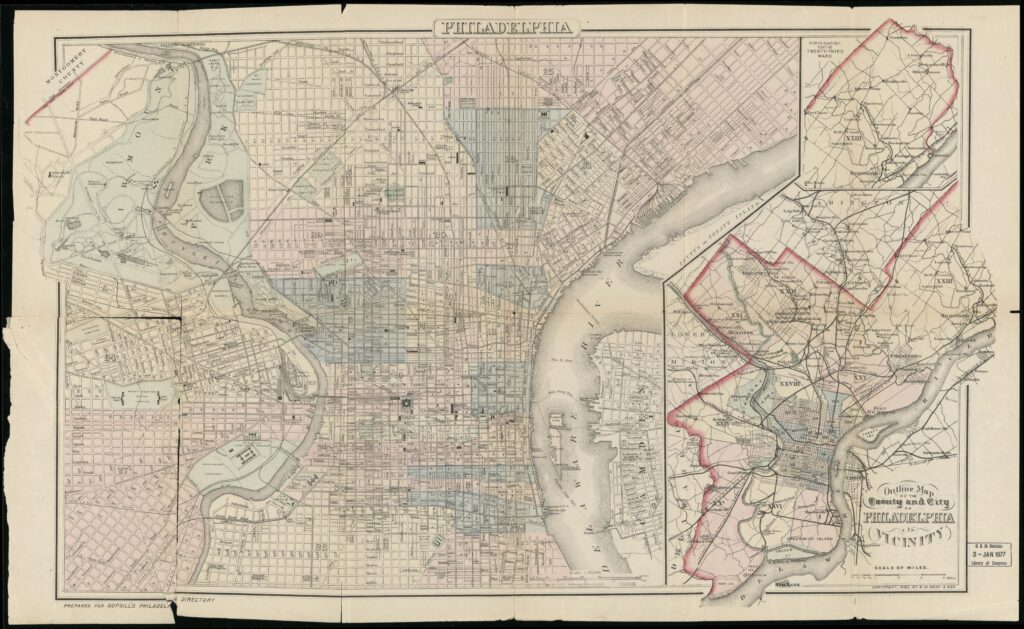
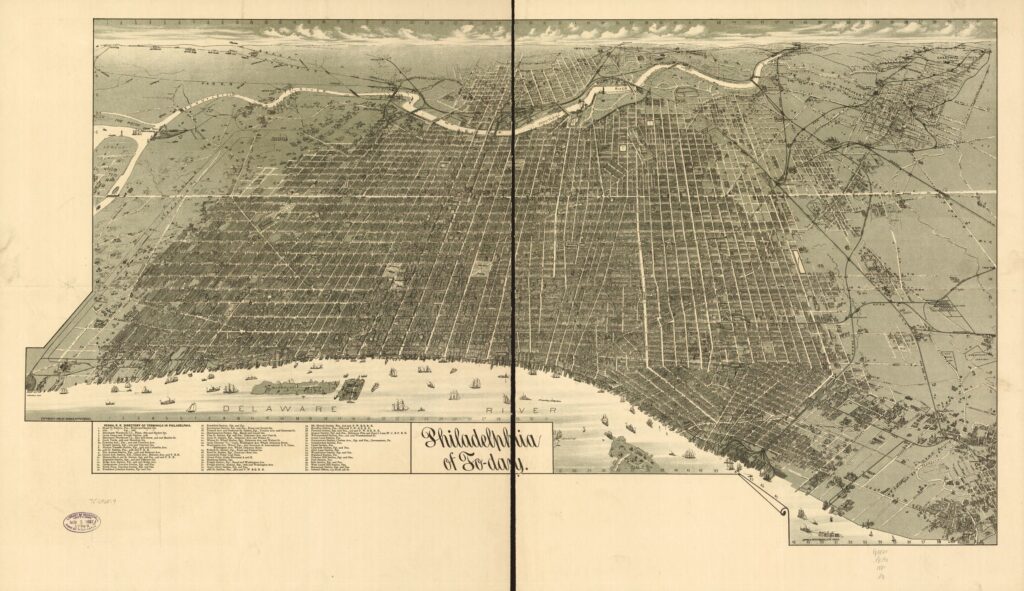
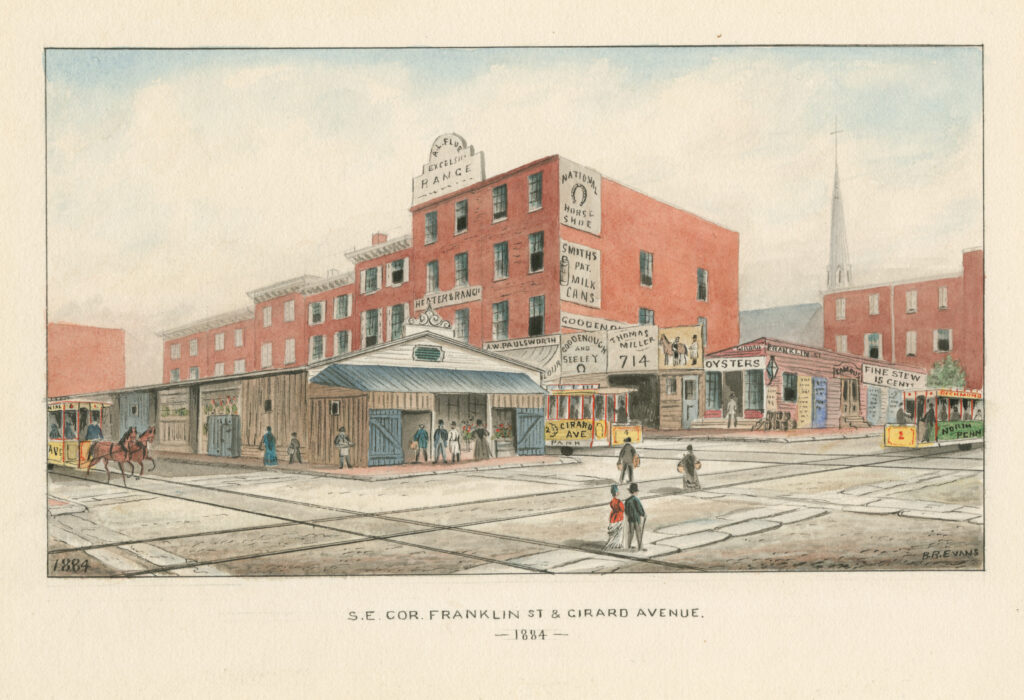

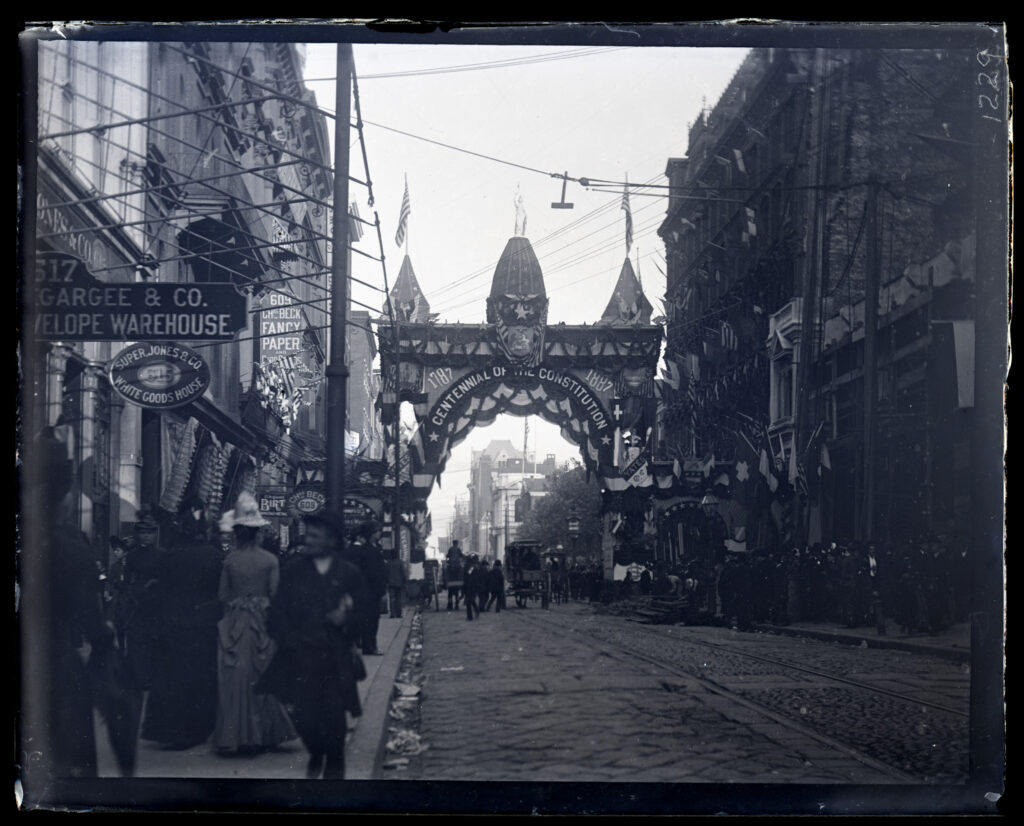
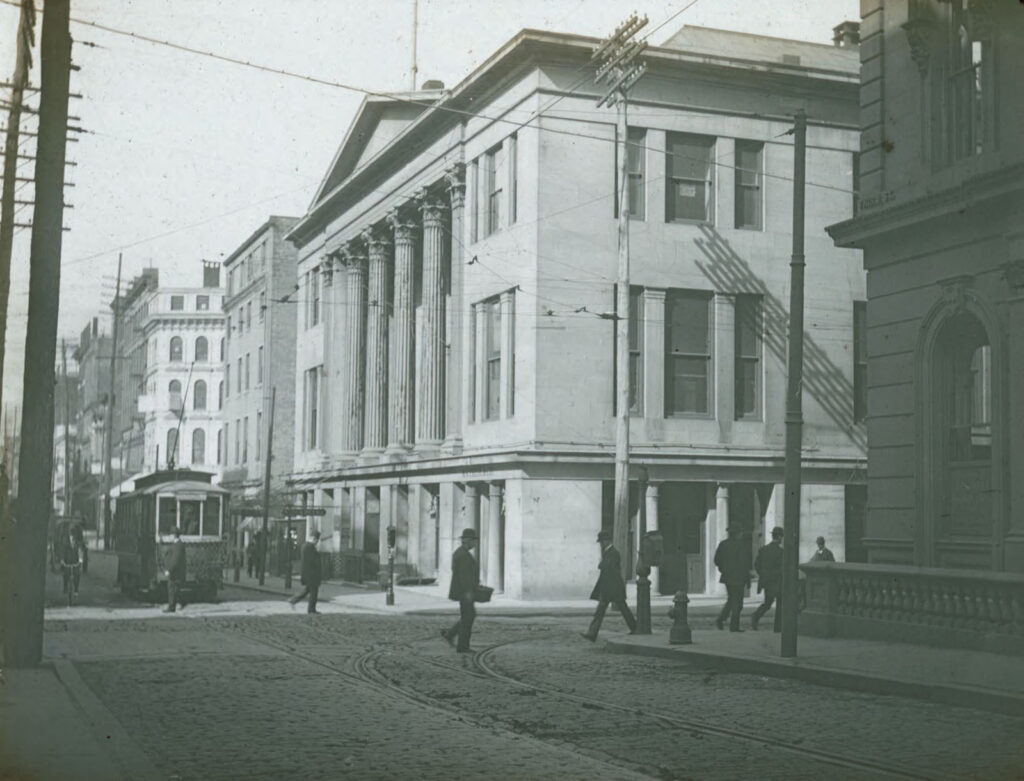
Resources
Allinson, Edward P. and Boies Penrose. Philadelphia 1681-1887: a History of Municipal Development. Baltimore, Publication Agency of the Johns Hopkins University. Allen, Lane & Scott, 1887.
“Astounding Verdict Traction Companies Actually Censured for Killing Boys.” Philadelphia Inquirer, vol. 132, no. 156, 5 June 1895, p. [1].
Baldwin, Peter C. Domesticating the Street: The Reform of Public Space in Hartford, 1850-1930. Columbus, OH: Ohio State University Press, 1999.
Barreyre, Nicolas. Gold and Freedom: The Political Economy of Reconstruction. Trans. by Arthur Goldhammer. Charlottesville: University of Virginia Press, 2015.
Bernstein, Samuel. “American Labor in the Long Depression, 1873-1878.” Science & Society, vol. 20, no. 1, 1956, pp. 59–83.
Broder, Sherri. Tramps, Unfit Mothers, and Neglected Children: Negotiating the Family in Late-Nineteenth-Century Philadelphia. Philadelphia: University of Pennsylvania Press, 2002.
“Building Associations in Philadelphia.” Scientific American Supplement, vol. 2, no. 38, Sept. 1876, p. 593.
Center City District. State of Center City 2023. Center City Philadelphia website, https://centercityphila.org/uploads/attachments/clgkys8fb52hswnqd4khmzy31-socc-2023-web.pdf
Cheape, Charles W. “The Evolution of Urban Public Transit, 1880-1912: A Study of Boston, New York and Philadelphia.” The Journal of Economic History, vol. 36, no. 1, 1976, pp. 259–62.
Currarino, Rosanne. The Labor Question in America : Economic Democracy in the Gilded Age, University of Illinois Press, 2011.
Daly, John, and Allen Weinberg. Genealogy of Philadelphia County Subdivisions. City of Philadelphia Department of Records: 1966.
Delaware Valley Regional Planning Commission. Trolley Crashes in Philadelphia and Delaware County. February 2013. https://www.dvrpc.org/reports/11037.pdf
Diemer, Andrew. “Reconstructing Philadelphia: African Americans and Politics in the Post-Civil War North.” The Pennsylvania Magazine of History and Biography, vol. 133, no. 1, 2009, pp. 29–58.
Downs, Gregory P., and Kate Masur. “INTRODUCTION: Echoes of War: Rethinking Post–Civil War Governance and Politics.” The World the Civil War Made, edited by Gregory P. Downs and Kate Masur, University of North Carolina Press, 2015, pp. 1–21.
Du Bois, W. E. B. The Philadelphia Negro: A Social Study Philadelphia: University of Pennsylvania Press, 1899.
“Fenders Tested. A Boy and a Man Knocked down and Uninjured.” Philadelphia Inquirer, vol. 131, no. 83, 21 Sept. 1894, p. 5.
Fisher, Sidney. A Philadelphia Perspective: The Civil War Diary of Sidney George Fisher. Edited by Jonathan White. Fordham University Press, 2007.
Freeman, Lance. “The Age of the Black Enclave.” A Haven and a Hell: The Ghetto in Black America, Columbia University Press, 2019, pp. 41–70.
Gray, Kareema J. “Social Change for Social Betterment: African Americans in Nineteenth-Century Philadelphia, PA.” Journal of African American Studies, vol. 18, no. 4, 2014, pp. 432–56.
Hammack, David C. “Comprehensive Planning before the Comprehensive Plan: A New Look at the Nineteenth Century American City” in Two Centuries of American Planning. Danial Schaffer ed. Baltimore, MD: John Hopkins University Press, 1988: 139-165.
Heath, Andrew. In Union There Is Strength: Philadelphia in the Age of Urban Consolidation. University of Pennsylvania Press, 2019.
Hepp, John H. The Middle-Class City: Transforming Space and Time in Philadelphia 1876-1926. Philadelphia: University of Pennsylvania Press, 2003.
Hoffmann, Charles. “The Depression of the Nineties.” The Journal of Economic History, vol. 16, no. 2, 1956, pp. 137–64.
Hollis, Patricia. Women in Public, 1850-1900 : Documents of the Victorian Women’s Movement. Taylor & Francis Group, 2012.
“Horses Killed by Electricity. A Dangling Wire on Ridge Avenue Carries Death with It.” Philadelphia Inquirer, vol. 130, no. 102, 12 Apr. 1894, p. 4.
Kahan, Michael. Pedestrian Matters: The Contested Meanings and Uses of Philadelphia’s Streets, 1850s-1920s. Dissertation. University of Pennsylvania. 2002.
Klaczynska, Barbara. “Immigration (1870-1930).” The Encyclopedia of Greater Philadelphia website, https://philadelphiaencyclopedia.org/essays/immigration-1870-1930/
McLain, Frank D. “The Street Railways of Philadelphia.” The Quarterly Journal of Economics, vol. 22, no. 2, 1908, pp. 233–60.
McShane, Clay, and Joel A. Tarr. The Horse in the City: Living Machines in the Nineteenth Century. Baltimore, MD: The John Hopkins University Press, 2007.
Miller, Frederic. “The Black Migration to Philadelphia: A 1924 Profile.” Pennsylvania History, July 1984, 315-350.
Nye, David E. American Illuminations : Urban Lighting, 1800-1920, MIT Press, 2018.
“Opposition to the Trolley.” Philadelphia Inquirer, vol. 126, no. 71, 11 Mar. 1892, p. 4.
“Report of the Board of Experts on Street Paving.” The Journal of the Franklin Institute. Vol. CXVIII No. 703-708, Third Series Vol. LXXXVIII-July to December, 1884. Philadelphia: Franklin Institute, 1884: 210-223.
Scharf, J. Thomas. History of Philadelphia, 1609-1884. Michigan: L.H. Everts, 1884.
Speirs, Frederic W. The Street Railway System of Philadelphia: Its History and Present Condition. Baltimore, MD: The Johns Hopkins Press, 1897.
U.S. Census Bureau. Quick Facts, Philadelphia. U.S. Census Bureau website, https://www.census.gov/quickfacts/fact/table/philadelphiacitypennsylvania,PA/HEA775221
Vapnek, Lara. Breadwinners: Working Women & Economic Independence 1865-1920. Chicago: University of Illinois Press, 2009.
Warner, Sam Bass. The Private City: Philadelphia in Three Periods of Its Growth. Philadelphia, PA: University of Philadelphia Press, 1968.
“Where Dangerous Trolley Wires Are Menacing Points Along Thirteenth and Fifteenth Streets, No Guard Wires There.” Philadelphia Inquirer, vol. 129, no. 181, 28 Dec. 1893, p. 4.
“Wicked Trolley Wires. A Boy Loses His Leg and Probably His Life.” Philadelphia Inquirer, vol. 131, no. 24, 24 July 1894, p. 3.
Wilson, Kathryn. “Chinatown,” The Encyclopedia of Greater Philadelphia, 2015. Online at https://philadelphiaencyclopedia.org/archive/chinatown/
Wilson, Kathryn E. “Claiming Space, Creating Chinatown, 1870–1940.” Ethnic Renewal in Philadelphia’s Chinatown: Space, Place, and Struggle, Temple University Press, 2015, pp. 15–39.
Wolfinger, James. Running the Rails: Capital and Labor in the Philadelphia Transit Industry, Cornell University Press, 2016.
